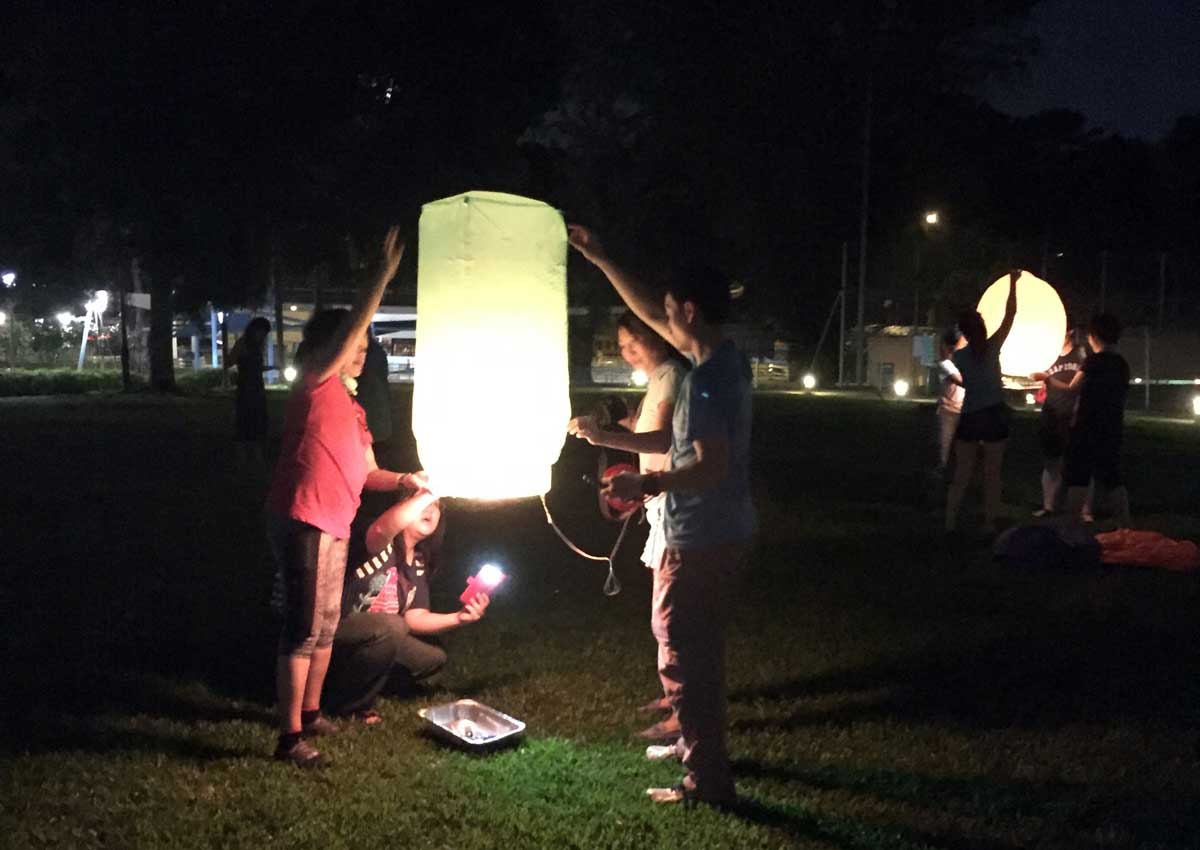You might have spotted them during the Mid-Autumn Festival last month: miniature hot-air balloons – with hopes and wishes written on their paper bodies – rising high into the sky.
Lit paper lanterns, or sky lanterns, drifting against the dark sky may make for a pretty picture.
But, when the fuel runs out and the lanterns make their way back to the ground, they sometimes get entangled in trees, set fire to vegetation or end up being ingested by wildlife.
As sky lanterns continue to be released during Chinese New Year or Mid-Autumn Festival celebrations here, environmentalists are concerned that they could pose a fire and environmental hazard.
Those intending to release sky lanterns must inform the Civil Aviation Authority of Singapore of their plans, and a spokesman told The Straits Times that it has received an average of about 17 notifications a year for the past five years.
Last month, travel company 3PlayGrounds organised a tethered sky lantern release event at a field near Ngee Ann Polytechnic in Clementi.
The event was touted as environmentally-friendly, involving lanterns attached to a string so they would not fly away – as per guidelines set by the Singapore Civil Defence Force – and made with biodegradable material.
But the event drew a backlash from some environmentalists, who said that despite the precautions, some lanterns still got caught in trees, causing embers to fall on surrounding vegetation.
Environmental biology graduate Sumita Thiagarajan, 22, who was at the event, said the 40m string was too long and too thin.
She counted six lanterns getting entangled in trees when they could not be reeled in in time.
She also said that one lantern snapped from its line and flew into a nearby patch of forest.
In response, the organiser said that of the 80 lanterns released, three ended up in trees after the event, but they were retrieved the next day.
On the lantern that flew into the forest patch, a 3PlayGrounds spokesman said the darkness prevented immediate retrieval and organisers returned to look for it the next day.
“The lantern was not found, and thick vegetation also made our search quite hard.
We assume that the lantern, being of thin paper, was dissolved by the rain,” she said, adding that the firm regretted this and recommended some precautions.
This includes using shorter strings that are 20m long, ensuring lanterns are released about 25m away from surrounding structures such as trees, and attaching the lantern to the reel more securely so the thread cannot be accidentally burnt through.
Miss Sumita said these measures were a step in the right direction, but added that organisers can look to alternatives without fire, such as lanterns with lights or drones.
To show that environmentalists are no party poopers, Miss Sumita and Ms Ria Tan, who runs wildlife site wildsingapore.com, plan to organise an event using kites instead of lanterns during the Mid-Autumn Festival next year.
“They can be wishing kites with different coloured lights and can still be flown high up into the sky, with no fire involved,” said Ms Tan.

This article was first published on Oct 17, 2016.
Get a copy of The Straits Times or go to straitstimes.com for more stories.






